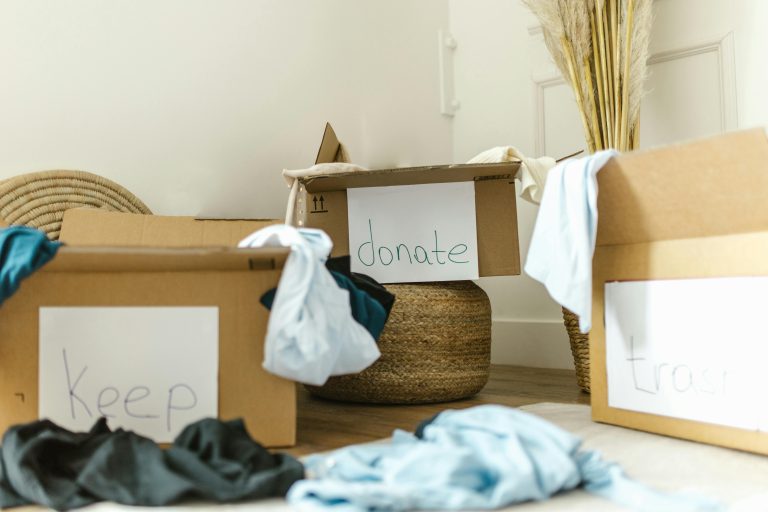The Greater Seattle area—stretching from Everett and the Snohomish lowlands down through King County and south to Tacoma—wears many labels: tech hub, gateway to the outdoors, coffee capital, maritime powerhouse. What we talk about less is the set of specialized cleanup services that quietly protect public health and restore dignity after difficult events. Biohazard remediation, hoarding cleanup, and unattended death or trauma scene cleaning are not dinner-table topics, yet they’re essential to keeping homes, apartments, workplaces, and community spaces safe. In a region with dense housing, aging buildings in some neighborhoods, and a cool, damp climate that can complicate sanitation, demand for trained professionals is real—and growing.
Why these services matter—everywhere, but especially here
“Biohazard” covers blood and bodily fluids, infectious materials, certain drug lab residues, sharps, and more. Incorrect handling can expose people to pathogens, cause structural damage, and trigger long-term odors or mold growth. Hoarding conditions bring a different mix of risks: blocked exits, overloaded floors, pest infestations, hidden water damage, and poor indoor air quality. After any unattended death or traumatic injury, families and property managers face a scene that is emotionally overwhelming and physically unsafe to address without training and protective equipment.
In a metro area like Seattle—full of multi-unit buildings, accessory dwelling units (ADUs), high-rise condos in South Lake Union and Belltown, older craftsman homes in Ballard and West Seattle, and student housing around the U-District—the stakes rise. Shared walls and ventilation systems can carry contaminants; limited parking and tight stairwells complicate safe waste removal; strict building and waste regulations require documentation and compliant disposal. Professionals exist to navigate all of that so residents don’t have to.
Local factors that shape cleanup needs
Climate and building stock. Seattle’s marine climate is famous: frequent rain, cool temperatures, and long damp seasons. Moisture accelerates odor absorption and can push minor sanitation problems toward mold and bacterial growth if not addressed quickly. Many homes feature unfinished basements, crawlspaces, and vintage wood framing—areas where fluids can wick into porous materials or odors can linger if the wrong cleaning methods are used.
Density and turnover. Apartments, co-ops, and mixed-use buildings from Capitol Hill to Bellevue mean greater turnover and a higher likelihood that property managers will face hoarding or biohazard situations between tenants. Quick, compliant turnaround is not just a convenience; it’s a health and liability issue.
Aging in place. The region’s many long-time homeowners increasingly choose to age in place. That’s wonderful for community continuity, but it can lead to increased unattended medical incidents or gradual hoarding behaviors that go unnoticed until a crisis. Compassionate, discreet services help families manage those moments respectfully.
Common scenarios professionals handle
Unattended deaths. When someone passes away alone, decomposition begins quickly—especially in heated, sealed buildings common in winter. Bodily fluids can penetrate flooring, subfloor, and even joists. Professionals assess structural impact, remove affected materials, sanitize with hospital-grade disinfectants, address odors with negative air and vapor phase treatments, and verify results with ATP or similar hygiene testing. Importantly, they also coordinate regulated waste transport.
Trauma and medical events. From a severe injury in a workshop to a blood spill in a stairwell, trained technicians arrive with PPE, spill control, and containment strategies that protect other residents and responders. They work to restore scenes to pre-incident condition with minimal disruption and full chain-of-custody for biohazard disposal.
Hoarding and severe clutter. Hoarding is complex and often tied to grief, anxiety, or neurodiversity. Cleanup isn’t just hauling—it’s a staged process: assessment, salvage of important items, careful sorting, pest management, odor remediation, and sometimes minor repairs. Ethical providers proceed at a pace that honors the occupant’s dignity and legal rights while reducing immediate hazards like blocked egress or overloaded electrical circuits.
Drug contamination. While specialized “clandestine lab” remediation requires additional certification and often government oversight, many biohazard firms are equipped to handle smaller-scale residue issues, sharps sweeps in common areas, and safe removal of contaminated furnishings—critical in shared spaces like parking garages, stairwells, and public restrooms.
The risks of DIY (and why the internet can mislead you)
It’s tempting to search for a bleach-based quick fix, but household cleaners can set stains, spread contamination via aerosols, and react poorly with certain materials. Without proper PPE and engineering controls (containment barriers, negative pressure, HEPA filtration), there’s real risk of exposure to pathogens. Porous materials—carpet, pad, subfloor, drywall—often must be removed, not surface-cleaned. And disposing of regulated waste in household trash or down drains can lead to fines and community health risks. Beyond the technical issues, there’s a human one: asking loved ones to clean a traumatic scene can compound grief.
If an incident involves injury or death, always contact authorities first. Once the scene is released, a professional remediation team can step in.
What professional cleanup actually looks like
1) Intake and safety plan. A reputable provider asks detailed questions, verifies that law enforcement or medical examiners have released the scene if applicable, and outlines a safety plan. They arrive in marked or unmarked vehicles per your preference and use appropriate PPE.
2) Containment and assessment. Technicians build containments to protect clean areas, shut down or filter HVAC if needed, map contamination pathways (including vertical migration between floors), and identify all affected materials.
3) Removal and disinfection. They extract fluids, remove porous materials that can’t be sanitized, and apply EPA-registered disinfectants with appropriate dwell times. They’ll use HEPA vacuums and, where needed, vapor or fogging methods as a finalizing step—never as a shortcut to real cleaning.
4) Odor and moisture control. Because the region is humid, odor control isn’t a single spray. It may include hydroxyl generators, sealed odor barriers on structural components, and moisture management to prevent secondary damage.
5) Verification and documentation. Post-remediation verification (PRV) matters. Look for firms that provide photos, disposal manifests for biohazard waste, and if offered, ATP or similar surface hygiene readings. Documentation protects you with insurers, tenants, and future buyers.
6) Restoration handoff. Some companies handle minor rebuilds; others coordinate with contractors. Either way, you should leave with a clear scope of what was removed and what’s ready for reinstallation.
Insurance, cost, and logistics
Many biohazard events are insurable under homeowners, renters, or commercial policies—especially when the loss is sudden and accidental. Coverage varies, but a good provider will help you document the loss and communicate with your adjuster. Out-of-pocket costs depend on access, square footage, building type, waste volume, and materials affected. Expect transparent estimates, line-item scopes, and no-surprise disposal fees. For hoarding, costs scale with labor hours, sorting needs, and any pest or odor treatments. Reputable teams offer phased plans so families can prioritize the most urgent safety risks first.
For multi-unit buildings, coordination is key. Work often happens during quiet hours to reduce disruption; containments keep hallways and elevators clean; and property managers receive completion reports for their records.
Compassion, privacy, and cultural sensitivity
Seattle is a tapestry of cultures and communities. Good remediation teams bring cultural humility to sensitive situations—accommodating preferences around item handling, engaging interpreters when needed, and prioritizing privacy. Discreet service (unmarked vans, minimal uniforms) is common and helps families or tenants maintain dignity.
How to choose a provider: a quick checklist
- Training and certification. Ask about industry training in bloodborne pathogens, respiratory protection, hazard communication, and confined-space awareness. While biohazard remediation doesn’t have one universal license, ongoing training is non-negotiable.
- Medical waste handling. Confirm they use licensed transporters and can show manifests for disposal.
- Respiratory protection program. Technicians should be fit-tested and follow a written program (a strong sign of safety culture).
- Clear scope and PRV. You should receive a written scope, change-order process, and post-remediation verification steps.
- Insurance and compliance. The company should carry appropriate liability and workers’ compensation insurance and follow local building and waste rules.
- Trauma-informed approach. Listen for language that centers compassion, choice, and consent—especially for hoarding or death scenes.
- Reviews and references. Look for consistent praise around communication, punctuality, and respect.
Community resources and prevention
While cleanup companies resolve immediate hazards, prevention and support come from the broader community. Families navigating hoarding can benefit from mental-health providers who specialize in hoarding disorder and from peer support groups. Older adults and their caregivers may find help through local social services, senior centers, and care navigators. Property managers can reduce risk by maintaining regular wellness checks (with tenant permission), ensuring smoke and CO detectors work, and establishing clear policies for sharps disposal in common areas.
If you or someone you love is experiencing a mental-health crisis, contact local crisis lines or emergency services immediately. For non-emergencies, primary-care physicians and community clinics can connect residents with counseling and support.
The bottom line
The Greater Seattle area’s beauty and bustle don’t exempt it from tough moments. When they occur, specialized cleanup restores more than a room—it restores safety, livability, and a measure of peace. In this climate and in our dense, diverse neighborhoods, professional biohazard, hoarding, and death cleanup isn’t a luxury. It’s part of a healthy, resilient city. Choosing a trained, compassionate team ensures the work is done thoroughly, discreetly, and in a way that honors both people and place.


